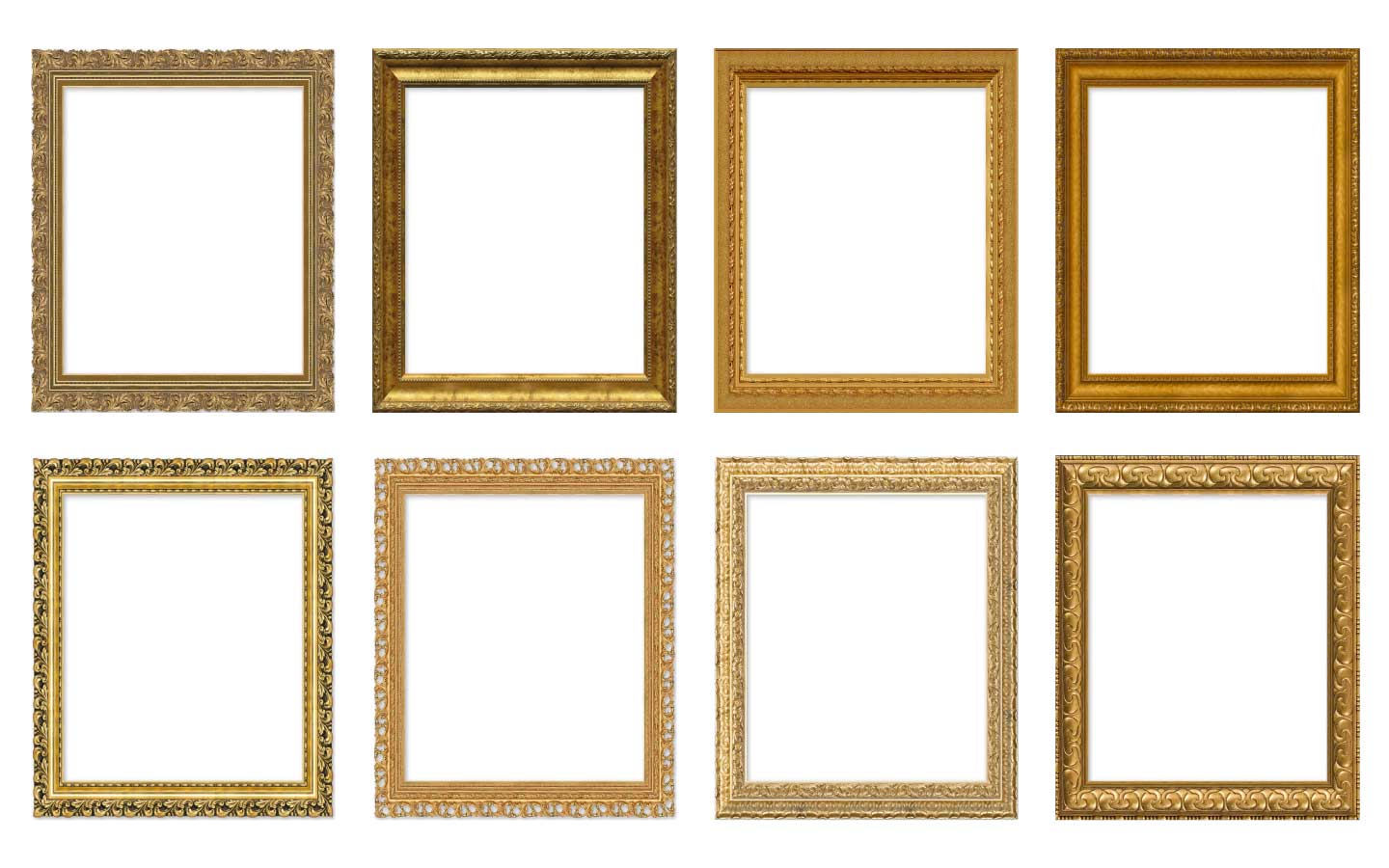
Since the onset of a picture frame history as we know it, frames have always been gilded. The classic golden color of a frame is mainly used due to its symbolism—wealth and luxury. But frames were also gilded for other reasons. Let’s explore the popularity of gold frames together.
“God is light, and in Him is no darkness at all”
1 John 1:5
Initially, only the most valuable artworks were framed. The church was the sole center of culture in those days, and the subject of framed masterpieces were usually Biblical, including Christian iconography.
Among the earliest evidence of the use of gold for framing can be found in Ancient Byzantium in the twelfth century. Gold was present both at the base of numerous religious mosaics and on the background of icons.
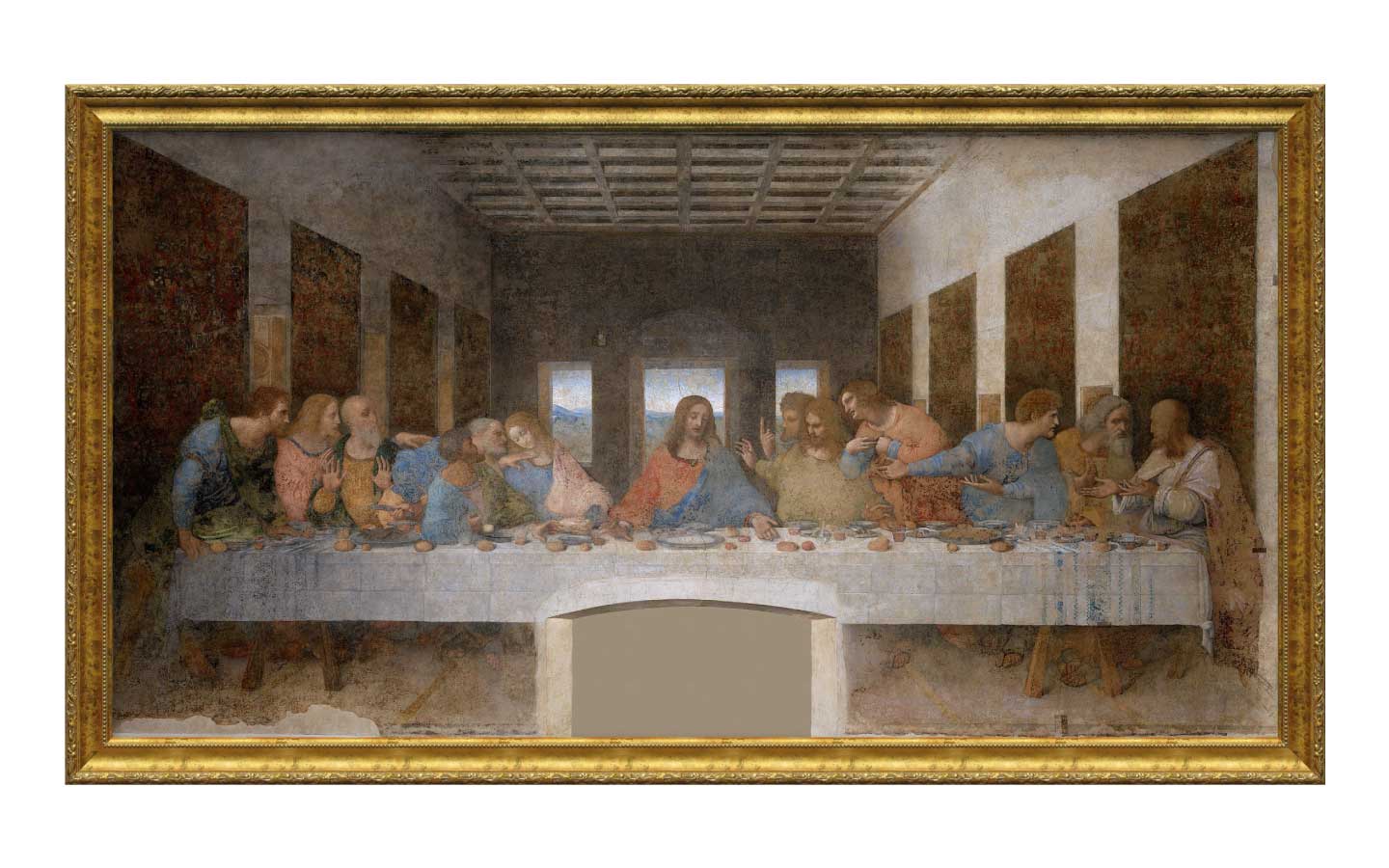
The Last Supper by Leonardo Da Vinci in a gold frame
The history of art shows that the relationship between a painting and its frame has evolved over the centuries. (Learn more about the history of framing in What’s Your Picture Frame Style? A Look at the History of Framing.) The first frames were merging with the images they framed rather than opposing them—their materials and gilding color were very similar. Later, the boundaries between the picture and the frame became more definite, but the frame still retained a golden color of the iconic tradition. And even today, the classic icon frame remains golden.
“Gold gives to the ugliest thing a certain charming air,
For that without it were else a miserable affair”
—Jean Baptiste Poquelin Molière
The painting and the picture frame in the modern sense of the word were born during the fourteenth century. Renaissance artists were the first to “dress” their paintings in chic golden frames. Gilded frames became more and more complicated and reached the peak of their form and popularity during the Baroque era, continuing into the Rococo period that lasted through the 1770s.
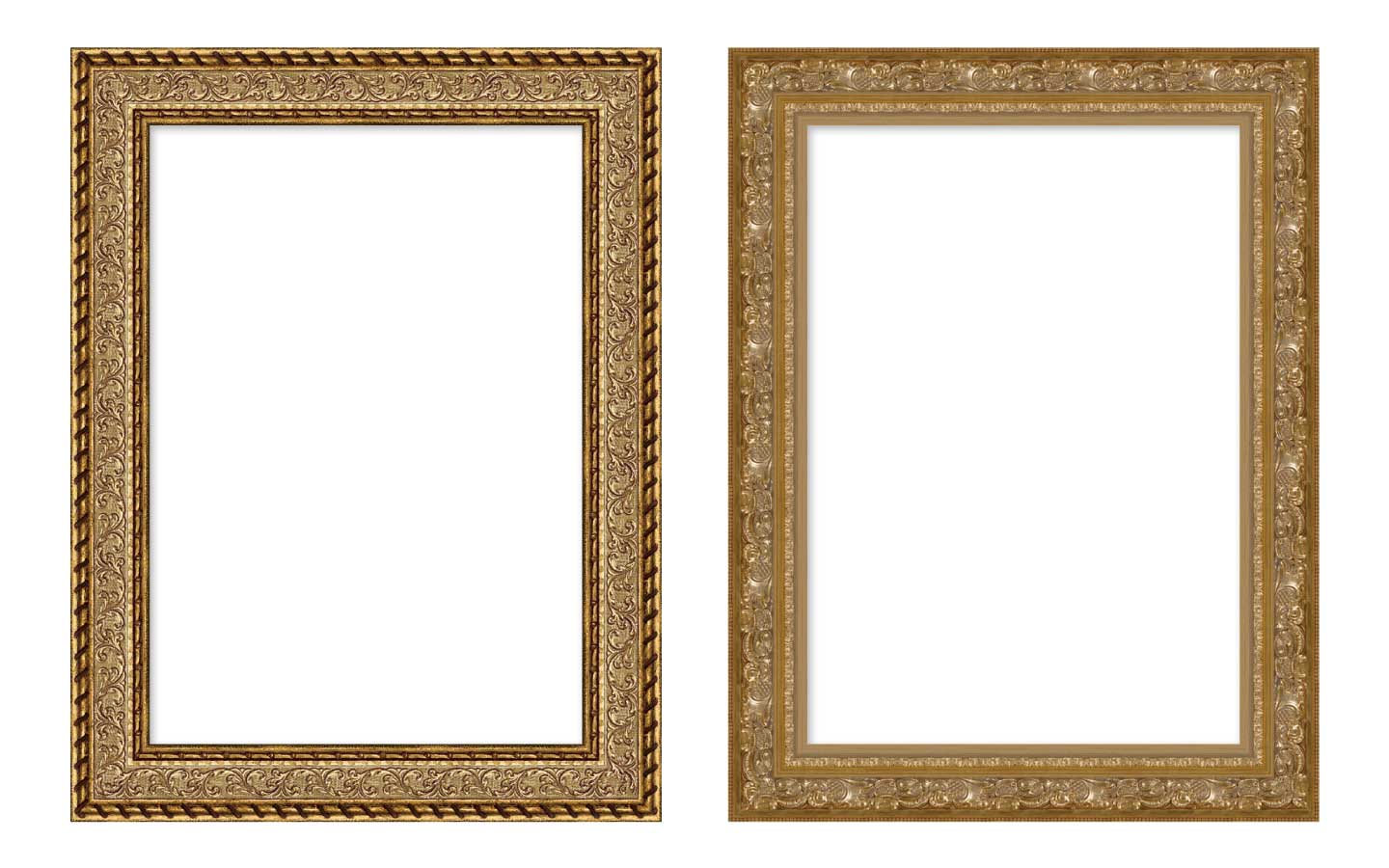
Renaissance-style frames available in ImageFramer
The gilded antique frames that have survived to our days look a bit different than when they were created. Over time, the glow of gilding softens and becomes more calm, dimmer. It’s for this “noble antiquity” that we value the frames of past centuries.
The picture frame gilder was a profession in high demand and importance during those bygone days. For instance, in Venice, by the end of the 18th century, there were 33 workshops and 64 craftsmen who specialized in gilding picture frames.

Gilded frame ready to be burnished
Most wooden frames are still gilded by hand today. With this method, thin sheets of gold foil are manually applied to the frame surface. (Read more about the different methods employed to create a gilded picture frame today.)
An added benefit of frames being gilded for decoration is it also created a protective layer, isolating wood from moisture and, to some degree, from the effects of time.
To determine whether the frame needs restoration, one simply has to observe its color, the patina, and the cracks in finish that will inevitably form over time.
“No gold glitters like that which is our own”
—Eliza Cook, Diamond Dust
In the postmodern era, when the choice of picture frames is endless, the golden color remains a popular choice.
Golden frames correspond to a wide variety of artistic styles. For posters and photographs, a golden frame with a minimal amount of embellishment would be an excellent fit.

Subtle gold frames available in ImageFramer
A wooden frame with a thin gold inner edging would help family photos look a bit vintage, and could also add a classy look to watercolors
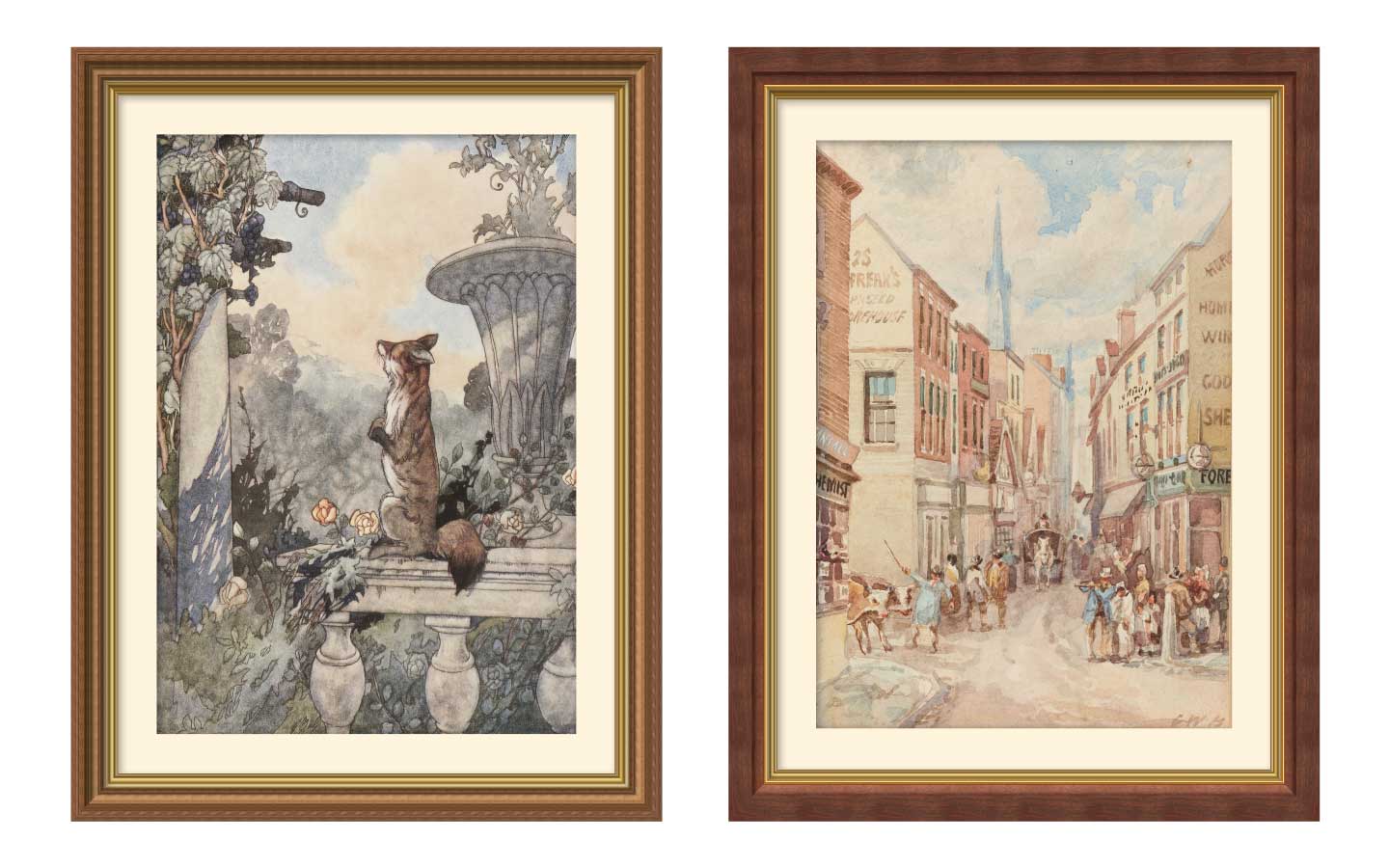
Framed paintings with gold details available in ImageFramer
Meanwhile a classic golden frame with curls and ornaments will perfectly emphasize the luxury of classic paintings.
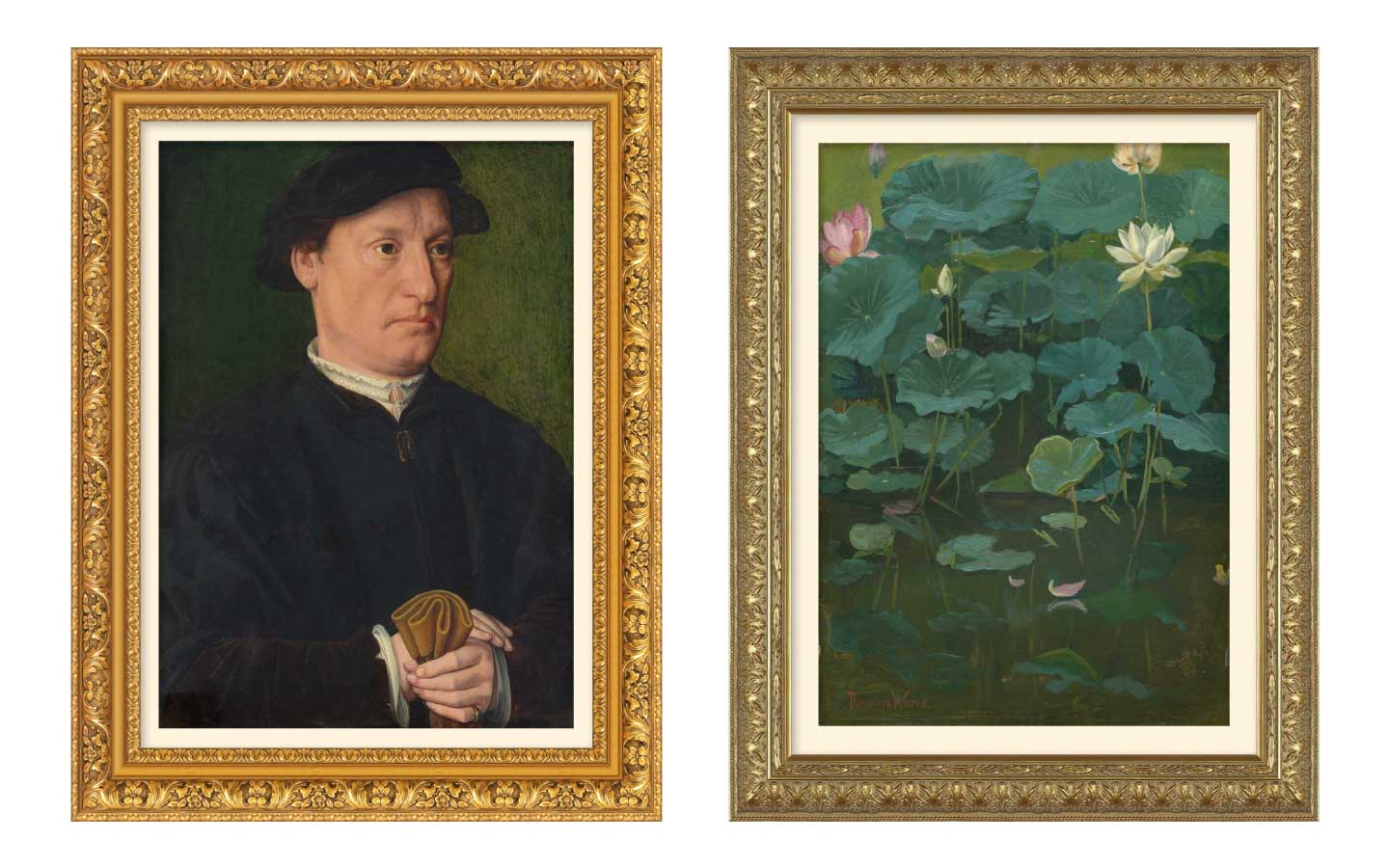
Classic paintings with lavish gold frames available in ImageFramer
With the digital framing application ImageFramer, more than a hundred picture frames of myriad shades of gold can be applied. Using the options to change frame width and shade, you can choose exactly what you need for your piece of art.
ImageFramer 4: Your art. Showcased.
Download the best-in-class Mac app for adding photorealistic frames and mats to photos and artwork today.